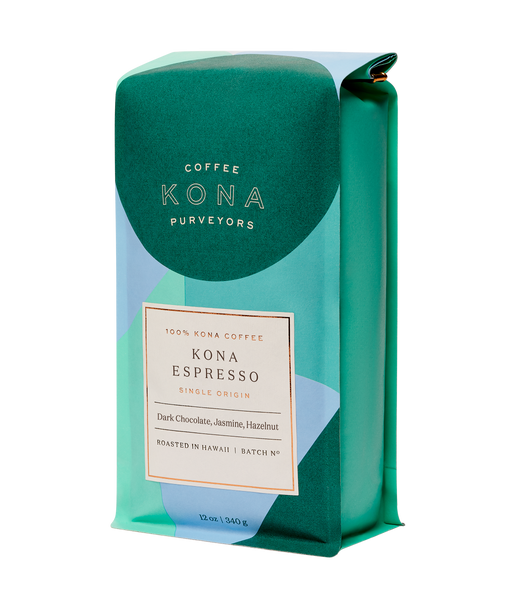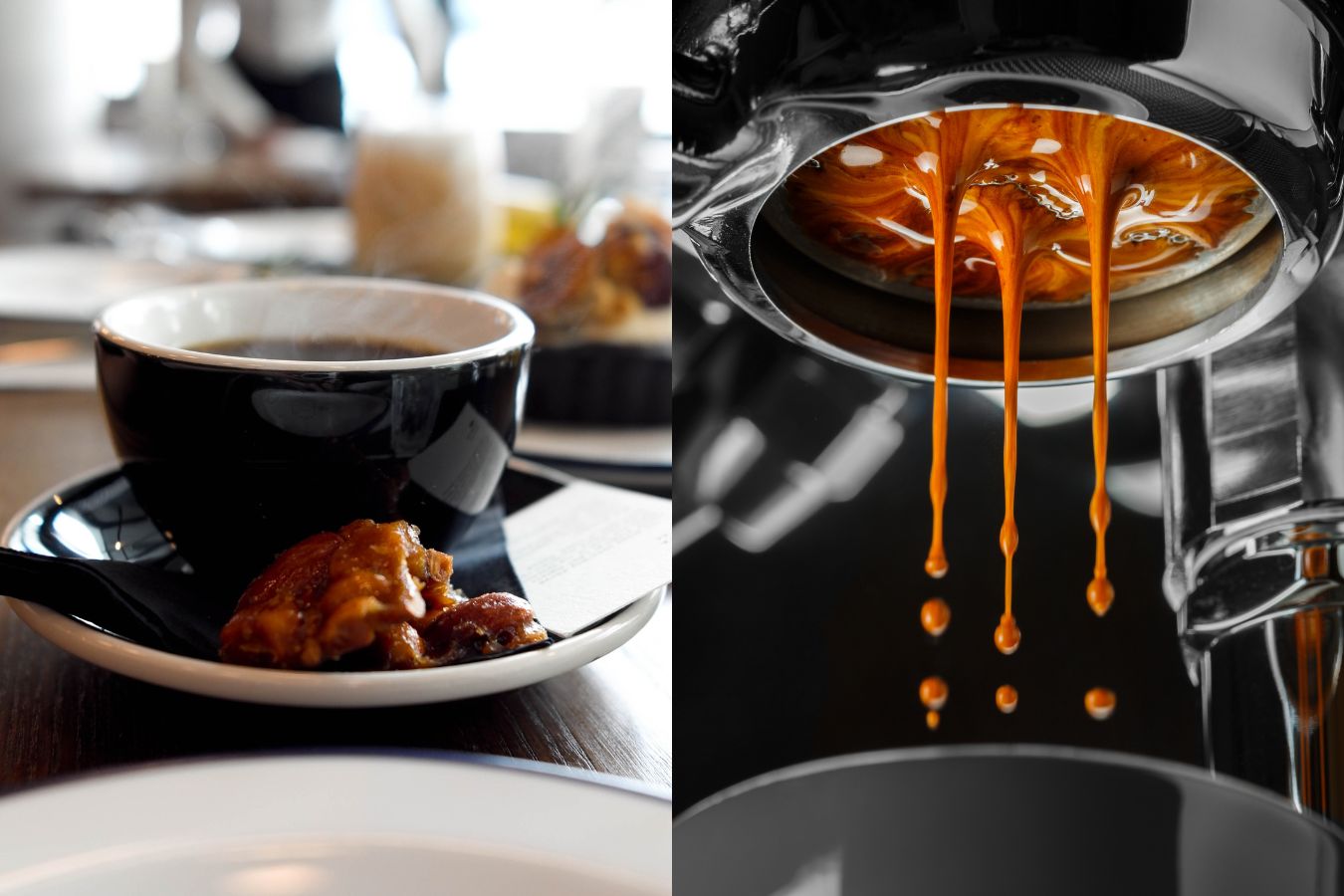Exploring the Rich Tastes of Coffee Beans: a Deep Study Espresso and Blended Coffee Beans
When you explore the abundant flavors of coffee beans, you uncover a complicated globe where each range brings its own personality to your cup. As you browse via the art of coffee and the imagination behind blended coffees, you'll start to value the subtleties that make each sip unique.
The Beginnings of Coffee Beans: Exploring Terroir and Taste Profiles
When you take a sip of coffee, you're not just enjoying a beverage; you're experiencing a rich tapestry of tastes shaped by the beans' beginnings. Each area creates unique taste accounts affected by environment, altitude, and dirt. Beans from Ethiopia usually rupture with intense, fruity notes, while those from Colombia tend to use a well balanced, nutty sweetness.
As you check out various beginnings, you'll notice exactly how terroir-- the ecological factors impacting a plant-- plays a vital function - Single Origin Espresso. The same coffee variety can taste significantly various depending upon where it's expanded
When you take into consideration these factors, you begin to value the intricacy behind your mug. Each sip tells a story of the land and the farmers who nurtured the beans. So, following time you delight, assume concerning the journey your coffee took before it reached your hands, and enjoy those complex tastes that mirror its origin.
Recognizing Espresso: The Art and Science Behind the Brew
When you think of coffee, it's not practically the strong flavor; it's likewise about the techniques that bring it to life. Recognizing just how various preparation methods influence preference can change your brewing experience. Let's discover the ins and outs of espresso preparation and reveal the one-of-a-kind taste profiles that make each cup unique.
Espresso Preparation Strategies
Coffee preparation is both a scientific research and an art, integrating accurate techniques with a deep understanding of coffee. To begin, you'll want to choose high-quality, newly roasted beans and grind them carefully for excellent extraction (Single Origin Espresso). The grind dimension is important; also rugged, and your espresso will be weak, also fine, and it'll be bitter
Following, tamp the grounds evenly in the portafilter to assure uniform removal. When you lock it into the maker, aim for a developing temperature in between 190 ° F and 205 °
F.As you pull the shot, expect the ideal removal time-- around 25-30 seconds. The outcome ought to be an abundant, creamy coffee with an attractive layer of crema on the top. With technique, you'll grasp these strategies.
Flavor Accounts Explained
The world of coffee offers a rich tapestry of flavor accounts that can raise your coffee experience. You'll see a balance of sweetness, resentment, and acidity when you take that very first sip. Each coffee bean lugs one-of-a-kind notes, from floral and fruity to nutty and chocolaty. Light roasts commonly display intense acidity and vibrant flavors, while dark roasts present deeper, bolder tones.
A well-crafted blend might harmonize the bright notes of an Ethiopian bean with the rich, chocolatey undertones of a Brazilian bean. Embrace the journey of uncovering coffee's varied tastes, and you'll change your coffee routine into an exciting adventure.
Processing Approaches: Just How They Influence Flavor and Fragrance
While it could appear that the beginning of coffee beans is one of the most considerable consider determining their taste and fragrance, the processing techniques used post-harvest play a just as crucial duty. You'll discover that these techniques can dramatically modify the final preference account of your mug.
For instance, the washed procedure eliminates the fruit from the beans prior to fermentation, typically leading to a cleaner, brighter taste. On the other hand, the all-natural process leaves the fruit undamaged during drying out, resulting in a sweeter, fruitier account.
Other approaches, like honey processing, strike an equilibrium, allowing some fruit mucilage to stay, providing a special complexity.
Each processing strategy communicates with the beans' integral qualities, boosting or silencing particular tastes and fragrances. So, when you sip that coffee or combined coffee, bear in mind that the trip from cherry to mug is influenced not just by beginning yet also by exactly how those beans were refined.
Toasting Strategies: Unlocking the Full Possible of Coffee Beans
Roasting methods are essential for revealing the complete potential of coffee beans, as they transform raw, environment-friendly beans into the fragrant, flavorful coffee you appreciate. The option of toasting technique-- light, medium, or dark-- considerably influences flavor accounts. Light roasts maintain the beans' natural acidity and fruity notes, while medium roasts balance sweetness and splendor. Dark roasts, on the other hand, stress bold, smoky tastes.
You can experiment with toasting times and temperature levels to locate your perfect mixture. A slower roast at reduced temperature levels enables complicated tastes to establish, while a quicker roast can increase anger. Take note of the splits during roasting; the first crack shows a light roast, while the 2nd fracture signals a dark roast. By grasping these techniques, you'll reveal a globe of flavor, elevating your coffee experience to brand-new elevations. Take pleasure in every sip, recognizing the treatment that went right into your cup!
The Magic of Blended Coffee: Developing One-of-a-kind Taste Experiences
Producing a distinct taste experience with view publisher site mixed coffee can transform your early morning ritual right into an exploration of preference. By combining various beans from various regions, you can reveal a harmony of flavors that raise your cup to new elevations. Each blend deals a distinct account, balancing body, acidity, and sweetness to develop something really special.
When you select a mix, you're not just selecting a coffee; you're selecting a trip throughout diverse landscapes and societies. Explore various combinations enables you to discover your individual favorites, whether you take pleasure in fruity notes or rich, chocolatey touches.

Sampling Notes: Identifying the Nuances in Your Mug
As you drink your coffee, you might observe a range of flavors dancing on your taste buds, each disclosing the complexities of the beans. You might taste the brilliant level of acidity reminiscent of citrus or the deep, rich notes similar to dark delicious chocolate. The sweet taste can stimulate honey or caramel, balancing the overall account perfectly.
Take notice of the body of the coffee-- does it feel light and airy, or is it complete and luscious? The coating, also, offers clues; a lingering aftertaste may hint at nuttiness or flower touches.

Don't forget to discover the one-of-a-kind features of various origins, as each region presents distinctive flavors - Single Origin Espresso. For instance, Ethiopian coffees frequently existing fruity notes, while Colombian beans could showcase a more spherical sweet taste. By recognizing these subtleties, you'll strengthen your admiration for click for more info every cup, boosting your coffee experience to new elevations

Brewing Methods: Making The Most Of Taste Extraction for Every Bean
When you discover the various developing techniques, you'll discover that each strategy can considerably impact the taste profile of your coffee. From French press to pour-over, each approach extracts various compounds, boosting or muting details notes. For circumstances, using a French press enables oils to remain in the mixture, creating a richer taste, while pour-over emphasizes clearness and brightness.
Temperature and grind dimension additionally play vital duties. A coarser grind functions best for cool brews, while a great work is optimal for coffee. Trying out water temperature level-- in between 195 ° F and 205 ° F-- can reveal concealed tastes, too.
Do not ignore steeping time; a fast removal can lead to sour notes, while over-extraction may generate anger. By adjusting these variables, you can optimize taste extraction and really boost your coffee experience. Appreciate the journey of finding what technique ideal matches your palate!
Frequently Asked Concerns
What Is the Suitable Water Temperature Level for Developing Coffee?
The ideal water temperature for brewing coffee's between 195 ° F and 205 ° F. If you utilize water that's as well warm, you'll over-extract tastes; also cool, and you will not remove enough. Go for that wonderful area for the ideal mixture!
How Does Grind Size Affect Coffee Flavor?
Grind size considerably affects coffee flavor. Finer grinds extract click here for more info much more flavors and oils, leading to a bolder taste, while coarser grinds yield a lighter flavor. Changing grind size helps you achieve your desired coffee account.
Exist Wellness Conveniences Associated With Drinking Coffee?

What Is the Difference Between Arabica and Robusta Beans?
Arabica beans are smoother and sweeter, often including fruity tastes, while robusta beans are stronger with a bitter taste and greater caffeine content. You'll see these distinctions in scent and brewing experience.
Just How Can I Store Coffee Beans for Freshness?
To save coffee beans for freshness, keep them in an airtight container, away from warm, light, and moisture. You'll maintain their taste longer if you just grind what you require right before developing.
Discovering the Rich Tastes of Coffee Beans: a Deep Dive Into Espresso and Blended Coffee Beans.
When you explore the abundant tastes of coffee beans, you discover a complex globe where each variety brings its very own character to your mug.When you take a sip of coffee, you're not just appreciating a drink; you're experiencing an abundant tapestry of flavors formed by the beans' beginnings.Roasting methods are essential for exposing the complete capacity of coffee beans, as they change raw, green beans right into the aromatic, delicious coffee you enjoy.As you sip your coffee, you could notice a range of tastes dancing on your palate, each disclosing the intricacies of the beans.